Search engine optimization (SEO) is a broad topic. To rank you, Google collects various signals, known on-page ranking factors and off-page ranking factors, that may or not involve your website strategy.
In general, Google relies on more than 200 signals to rank your website, and they have never revealed a specific list. Instead, their Google Search page explains, “ Search algorithms look at many factors, including the words of your query, relevance, and usability of pages, the expertise of sources, and your location and settings. The weight applied to each factor varies depending on the nature of your query.”
Though It may sound like it, this doesn’t mean that SEO is winging it. Instead, many companies have developed tools, including Ahrefs, Ubersuggest, and Semrush, to understand how Google ranks pages. They all have found standard signals that, without any doubt, Google uses to rank sites.
Based on these studies, they’ve come up with specific recommendations to help businesses improve their online presence. This blog will walk you through the top five on-page SEO ranking factors you should consider while creating your local SEO strategy.
1. Unique, Client-Centric Content
Content is crucial for your website’s success. It should be clear, brief, and solve a (or lots of ) problem(s). Your website heading should communicate your unique value proposition. This short statement tells people how you can help them, the benefits they will receive when doing business with you, and why you’re different.
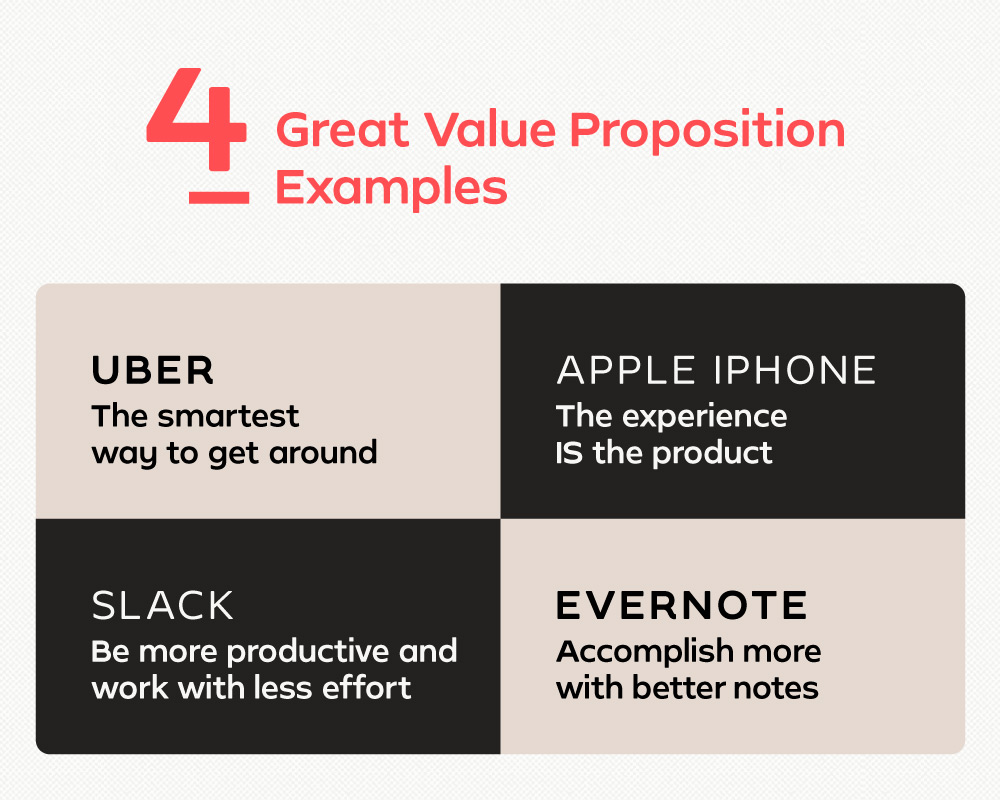
For example, suppose you were an accountant and knew your prospective client’s pain point is that they consider bookkeeping a needed headache to run their business. In that case, your unique value proposition could look like this:
- Header: Small Business Accounting Services to Make Bookkeeping Painless
- Description: Smith Accounting helps you run your business effortlessly and gives you all the data you need to make smart decisions and increase your bottom line.
Use bullet points to explain the benefits of each product/service. Keep in mind people find bullet points easier to read. In the example above, working with Smith Accounting gives business owners the following benefits: less effort, data analysis, and increasing their bottom line.
As you explain how you’ll deliver what you promise, you’ll set the right expectations. For example, if Smith Accounting primarily provides in-depth data analysis through written reports and only has on-demand virtual meetings, the descriptions for each bullet point should say so.
You can use this same strategy throughout your website: communicate who you are and how you can help.
Also, provide points of proof about your service quality through testimonials, case studies, or before and after photos. This way, clients will know for sure that you’ll be with them through thick and thin. Once you’ve shown that you are the right person to solve their problems, direct clients on how to contact you through a call-to-action.
Note: Even though it may not seem like it, blogs work the same way. You first have to recognize your clients’ frustration, explain how your blog will help, provide solutions, and finally direct them onto the next steps after reading your content.
2. Relevant, High-Intent Keywords
Keywords are crucial to put your website in front of the right audience. You’ll need to find which terms people use to search for your product/service and create a strategy around it. These keywords are usually long-tail and denote a purchase intent.
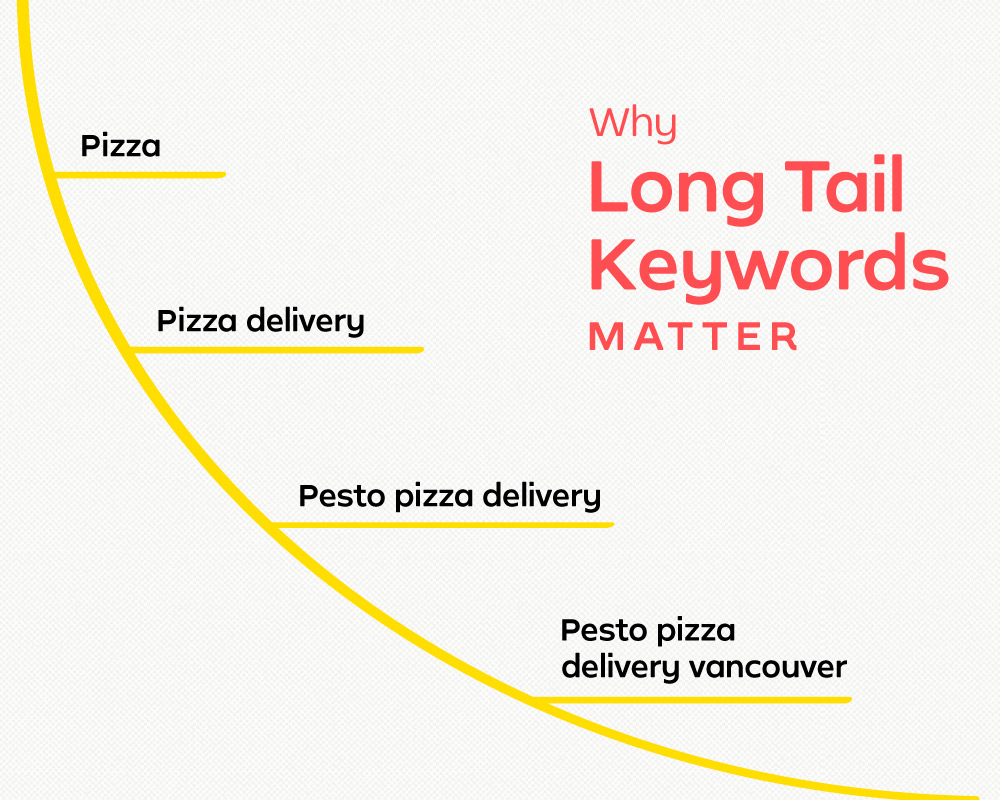
If you’re creating a keyword strategy, check out our blog on doing local keyword research. Ps: we also share how to use them strategically within your content!
Google’s spiders will skim through your content and analyze if your keywords match people’s queries —the terms they use to search online. This way, it knows which sites to show on its page results.
However, this doesn’t mean you should forcefully fill your content with keywords —this is a lousy practice called keyword stuffing. Instead, focus on creating quality content that explains how you’ll help clients. Keywords will naturally fit in. This is why we’ve put user-centric content as the number one on-page SEO factor you should consider. Focus on writing for those who will buy from you.
When you focus on people and give them value, they stay longer on your site, learn more about you and take action. You’ll stay top of mind and get users to engage with your brand.
At the same time, your bounce rate decreases —a metric measuring how long users stay on your website. Google will notice people are staying longer on your site, and they will naturally rank you higher.
Google’s algorithm will interpret it as: “People like this site. They’re navigating through it and reading what these guys have to say. We should put this website in front of more people searching for these same things because they will probably like it too.”
3. Image Optimization
Like bullet points, images help break your content for a more friendly user experience. Additionally, they show what your service is all about, helping set the right expectations. Below are some of our recommendations for proper image usage and optimization:
- Place your website images strategically within your website and use them to support your written content.
- Add alternative text to each image —a short text describing what the image contains and include keywords when possible.
- Ensure your images are high quality, under 150 KB/s, and obey the following requirements:
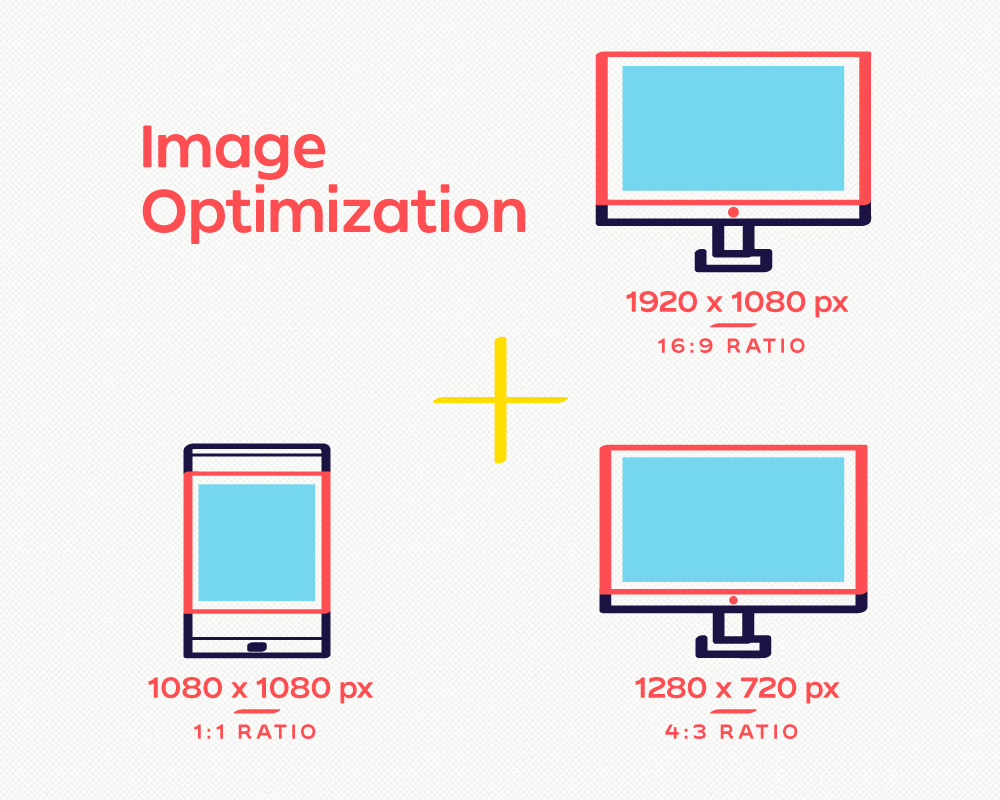
As a plus, use the exact header text to name your image files before uploading them to your website. For example, if your home page’s header is “Small Business Accounting Services to Make Bookkeeping Painless,” all the images you upload to your homepage should be named that way. Furthermore, adding alternative text to your image will help you rank on Google images.
4. URL Optimization
Your URL should have a simple structure and include your primary keyword. Besides being SEO friendly, this will also help users remember your site. People will never remember the URL www.roofers.com/153265_54654. It will be easier to find and remember your URL if it includes the terms clients use to search for your product/service (i.e., www.roofers.com/asphalt-shingles).
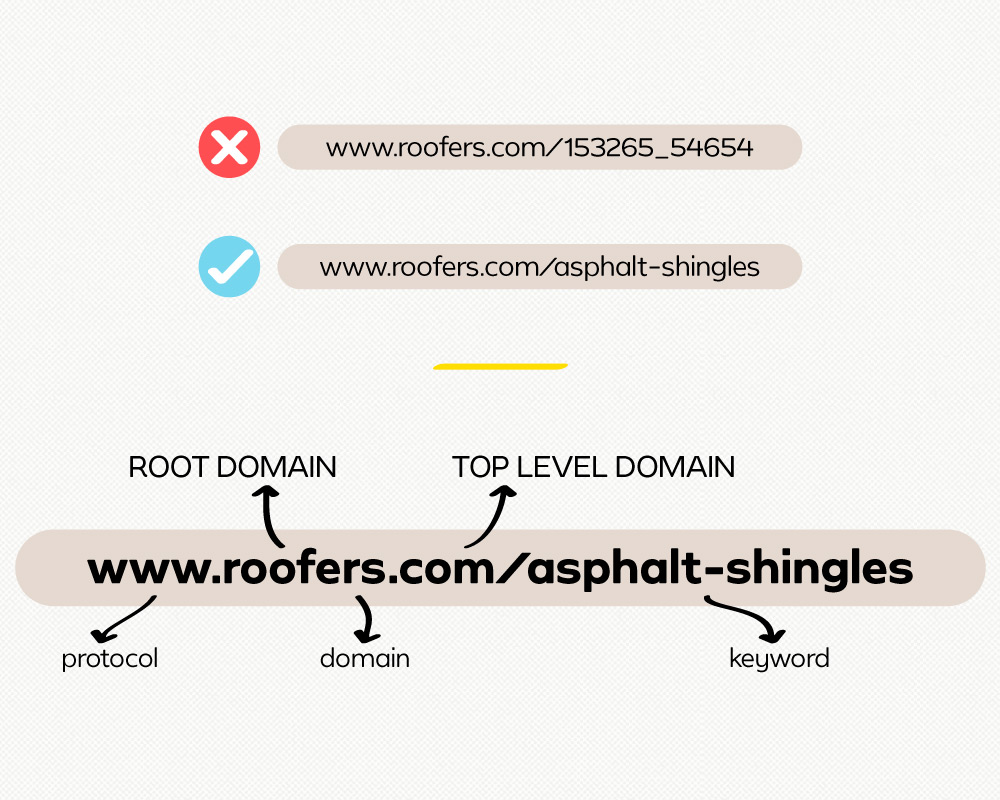
5. Meta Title and Meta Description
Your meta title and meta description don’t appear on your website, but they are both visible to anyone who finds you on Google search.
A compelling meta title and description will lure in visitors, increasing your click-through rate. Here are some tips for writing your metas:
- Use a snippet optimization tool to preview your metas.
- Use power words that entail an action or benefit of clicking on your site
- Include a call-to-action in the meta description
- Use your focus keyword on both your meta title and meta description
- Make sure they match the content of the page
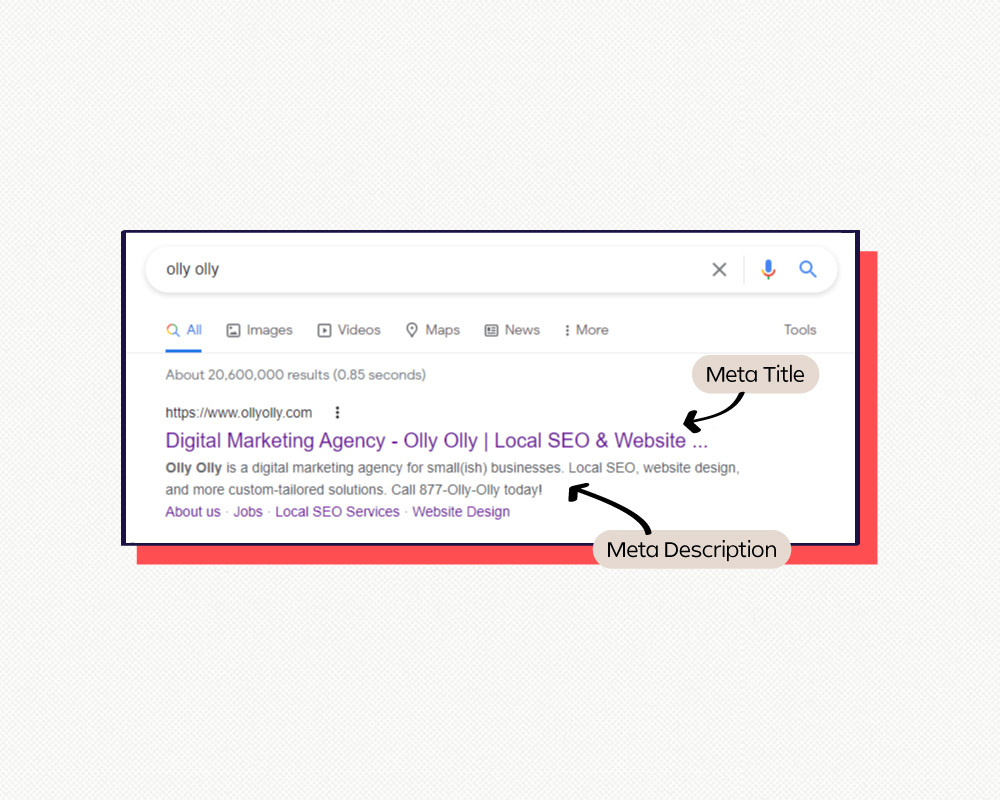
Conclusion
Optimizing your website for the proper on-page SEO ranking factors will put you in front of a relevant audience. Give each of the points mentioned above a try! We’re pretty sure they will contribute to your online marketing efforts.
If you have an excellent product/service, create a brand and content that communicates it along with a great keyword strategy, you’ll be on your way to getting found online by your prospective customers.
Do you need help with your online marketing efforts? Contact our team for an audit or subscribe to our monthly newsletter to receive all things SEO straight to your inbox.
a

Article by Francis Espinoza
Francis is a Social Media Manager here at Olly Olly. Born and currently based in Nicaragua, her professional background and passion are all things inbound marketing.
Like what you read? Send Francis a message here.

